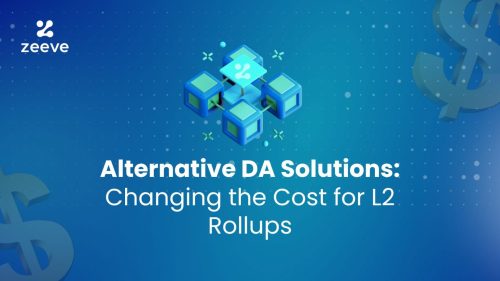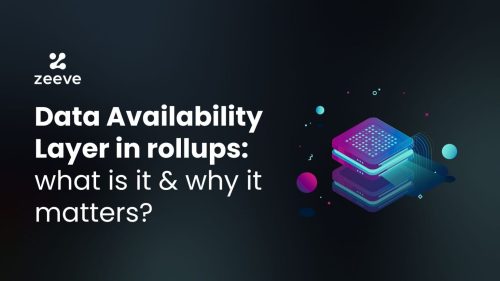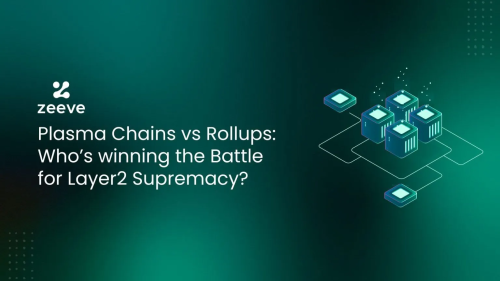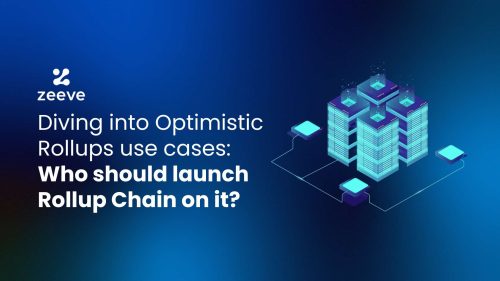
Alt DA Solutions Changing the Cost Game for L2 Rollups: Spotlight on Key Players
Whether it’s a monolithic or modular Layer2, they require a reliable data availability (DA) layer to ensure that data is stored securely and is readily available to all the network participants for verification. However, there’s a difference because monolithic rollup chains have to choose Ethereum as their DA layer for on-chain data storage, whereas modular L2s/L3s have the flexibility to choose Ethereum or an ‘Alternative Data Availability Layer.’
In this article, we will learn about Alt Data availability solutions as they are getting huge traction among L2 rollups. We will understand what Alt-DA layers and their benefits for Layer2 rollups, and most importantly, we will dive deeper into the key players of DA space, namely NEAR DA, Celestia, Avail, and EigenDA as of now.
What are Alternative Data Availability (Alt-DA) Solutions?
To understand the Alt Data availability solutions concept, you must first understand data availability layers and their importance in modular L2/L3 rollups. For this, you can refer to our guide linked below:
Data Availability Layer in Rollups: what is it, and why do we need one?
Now, let’s understand alternative DA. Alt data availability solutions serve as a scalable and cost-efficient alternative to the traditional monolithic blockchain’s DA layer– Ethereum. Simply stated, Alt data availability solutions offer a separate DA layer for Layer2 rollups besides the execution and consensus layer, thereby enabling them to store data in another blockchain in a permissionless way. The alternative data availability layer is suitable for all kinds of Layer2 and Layer3 solutions, but they are currently popular for changing the cost game in L2 rollups.
Main Benefits of Alternative Data Availability Solutions
Alt data availability solutions offer a range of benefits for Layer2 rollups, out of which we have discussed the main benefits below:
- Massive reduction in cost:
As we know, the Ethereum ecosystem is highly congested, which makes it really expensive to publish data on it. Almost 95% of a rollup cost comes from on-chain data publishing. To solve this, alternative data availability offers a dedicated layer for storing data off-chain and making them easily available to nodes for verification. This approach reduces the costs by 100x and improves the throughput capability significantly.
- Dynamic scalability:
By implementing advanced concepts like resource-limited ‘Light Clients’ and ‘Data Sampling,’ Alt data availability solutions eliminate the need to download the entire data of a block for data validation. Instead, nodes only need to download the necessary data. This approach makes space for dynamic scalability in L2 rollups while reducing congestion.
- Easy retrieval of data:
Data retrieval is simple and quick with alternative DA layers because they offer reliable RPCs and light nodes to use within DA. Both these components allow for seamless retrieval of data and sending them to the respective nodes.
1- NEAR DA
NEAR protocol is one of the strongest players in the data availability (DA) space. NEAR’s alternative data availability solution is designed to reduce the data availability cost while allowing 100% uptime for the rollups throughout their lifetime. NEAR’s data availability Layer uses NEAR’s unique consensus mechanism – Nightshade, which is designed to avoid slowing down Layer2 networks regardless of the high transaction volume of chains, e.g., gaming-based rollup chains.
Enterprises and web3 projects seeking to build their sovereign L2 rollup chain can achieve high modularity with NEAR DA. Basically, the DA layer at NEAR is an out-of-the-box pluggable solution that L2s can integrate quickly into their preferred rollup stack, such as Polygon CDK, Zk Stack, and Arbitrum Nito Stack. Also, NEAR DA claims to offer up to 85,000x cheaper transactions than Ethereum and 30x cheaper than Celestia. To further prove this, NEAR DA presents the comparison table added as below:

Key features of NEAR DA:
Light client, Blob store contract, and RPC client are the three main features or components of the NEAR data availability layer that allow it to serve high throughput, security, and lower cost. Let’s learn more about them:
- Light Client:
NEAR DA uses a Light client– a trustless off-chain client that enables DA-specific features such as Reed-Solomon erasure coding, KZG commitments, and storage connectors. Also, the Light client allows for seamless access to transactions and receipts proofs in blocks or chunks. This feature is useful for checking dubious blobs or also for validating the submission of any blob. Further, NEAR DA plans to add advanced extensions to its light clients. For example, they will allow non-interactive proofs to be utilized for blob commitments.
- Blob store contract:
The blob store contract on NEAR DA is designed to store arbitrary data availability blobs. These blobs are basically the sequencing data that comes from rollup chains, but depending on the condition, the data can be of any type. With the blob store contract, NEAR DA offers pretty cheap data storage. Currently, 1NEAR is the fee for 100KiB storage. To limit this cost even more, NEAR DA avoids storing the blob data within the blockchain state.
- RPC Client:
RPC client in NEAR DA is responsible for submitting data blobs on NEAR. da-rpc, da-rpc-sys, and da-rpc-go are the three RPC clients that the NEAR data availability layer currently utilizes. Here, da-rpc is a Rust client that is responsible for offering a simple interface for users to interact with NEAR DA. On the other hand, da-rpc-sys is an FFI client designed for non-rust applications or rollups, allowing them to deal with pointers wrangling. Likewise, da-rpc-go serves as a GO client for non-rust applications, which provides an additional application layer to enable easier interaction with bindings.
2- Celestia
Celestia is another leader in the DA space as it offers a scalable solution to data availability problems with its modular, highly scalable alt data availability solution. Celestia’s DA can drastically increase the transaction throughput in rollups, and meanwhile reduces cost up to 100x in Layer2s.
Celestia uses two novel approaches on its data availability layer— DAS, data availability sampling, and NMTs– Namespaced Merkle trees (NMTs). Let’s learn more about these features:
Key features of Celestia’s DA:
- Data Availability Sampling (DAS):
Data availability sampling in Celestia allows light nodes to verify data availability without needing to download all the block data. DAS conducts multiple rounds of random sampling for even a small portion of block data. With each completed round, a light node’s confidence in data availability increases. And, once a predetermined confidence level is reached, such as 99%, the light node considers the block data as available. So, basically, data availability sampling empowers light nodes to enhance network security and throughput using less expensive hardware in comparison to full nodes.
- Namespaced Merkle Trees (NMTs):
Namespaced Merkle Trees is a unique feature that allows the execution and settlement layers on Celestia to download only the transactions that are relevant to them, thereby enhancing the efficiency of the system.
Basically, Celestia breaks down the block data into various namespaces. Each rollup using the DA layer will have its separate namespace. This means every rollup (or application) will download its own data and they will ignore data from other applications. To ensure this mechanism works properly, the DA layer must prove that all the data in the given namespace is complete. This part is accomplished through Namespaced Merkle Trees.
3- Avail
Avail introduces an unprecedented data availability interface and highly advanced security capabilities that facilitate the seamless creation of fraud-proof or zero-knowledge-proof based L2 rollups with greater efficiency and a trust-minimized way.
Avail adopts a hybrid consensus model based on Polkadot’s BABE & GRANDPA. It includes innovative DA features, such as erasure coding, KZG polynomial commitments, and data availability sampling, which guarantees best-in-class data availability. Let’s detail these features:
- Erasure coding:
Avail incorporates the ‘Erasure Coding’ mechanism to solve data availability problems by introducing data redundancy to the blocks. Erasure coding empowers nodes to extend any n chunks of data into 2n chunks in a way that any n out of 2n becomes sufficient to reconstruct the original data piece, enabling seamless verification. For example, if only 25% of the data is available and the rest of the data is lost, nodes can still verify the blocks.
- KZG polynomial commitments:
Avail applies Kate Zaverucha Goldberg (KZG) polynomial commitments to each block containing the redundant data. These commitments are basically cryptographic validity proofs that maintain data integrity, guaranteeing that the data stored in blocks are 100% accurate and tamper-proof. Validators on Avail use KZG polynomial commitments to confirm data integrity so that it can be attested to the main chain without any security risk.
- Data availability sampling:
Light clients within Avail’s ecosystem use Data Availability Sampling (DAS) to verify block data integrity. They check KZG polynomial openings against the commitments in the block header for each sampled cell, enabling them to independently and instantly verify data availability. This method bypasses the need for reconstructing full KZG commitments or relying on fraud proofs, underpinning Avail’s high security and data integrity standards maintained by decentralized verification.
4- EigenDA
EigenDA is a popular alternative data availability solution that settles on Ethereum while leveraging EigenLayer’s restaking primitive. With staking primitive, EigenDA allows restakers to delegate their stake to node operators, who then perform validation. Meanwhile, Ethereum alignment ensures lower latency and massive scalability with EIP-4844 and danksharding.
Instead of relying on consensus mechanisms or data availability to reach consensus, EigenDA implements a hybrid model that eliminates the need for peer-to-peer consensus in the data distribution process. Within this system, EigenDA transmits data to operators, and then a disperser service aggregates the diverse signatures to create data availability proofs to be validated eventually on the Ethereum blockchain. On top of all these, EigenDA offers ‘Hyper Scalability,’ which means that the data availability capacity expands in tandem with the aggregated bandwidth of the network.
Following are the key features of Eigen DA that allow it to serve as a highly feasible AIt data availability solution, offering high throughput, lower cost, and reliable security:
- Erasure Coding:
Similar to Celestia, EigenDA also allows Layer2 rollups to perform erasure coding to the data chunks, ensuring data redundancy. Further, it implements KZG polynomial commitments (advanced ZK proofs) that allow nodes to download necessary data but not entire blobs. EigenDA employs validity proofs in the form of KZG commitments, which enable nodes to verify the correct data coding.
- Restaking mechanism:
EigenDA leverages Eigenlayer’s restaking mechanism to guarantee high network security for Layer2 rollups. This means validators that are already staking their ETH can now opt to restake(reuse) their ETH to secure L2 rollups using EigenDA’s data availability layer.
- Dual Quorum:
EigenDA has a unique feature– Dual Quorum in which two distinct Quorums need to be attested for data availability. For example, the first Quorum can be ETH restakers, and the second can be rollup chain’s native stakers. Both of these quorums are independent and redundant sources for data availability. Hence they together prevent failure of EigenDA, which ensures high security and reliability.
Comparing the Top Alternative Data Availability Solutions:

Zeeve’s Modular RaaS: Launch your L2/L3 Rollups with Alternative DA Layer
Zeeve’s modular Rollups-as-a-service (RaaS)is optimized to support all the leading alternative data availability solutions, including Near DA, Celestia, Avail, and Eigen Layer. With Zeeve RaaS, web3 projects can quickly spin up their own high-performance rollup chain using their preferred rollup frameworks like Polygon CDK, Arbitrum Orbit, OP Stack, or zksync’s ZKStack. Currently, Zeeve offers a one-click rollup deployment sandbox for Polygon CDK and zkSync Hyperchains. Also, you have the flexibility to choose an alternative account abstraction service (AA), decentralized sequencer, aggregator, and other tools and protocols that will make your L2/L3 even more modular.
For more information about how Zeeve’s Rollups-as-a-service is simplifying the development of Layer2 Rollups or to discuss your project requirements, connect with us experts. Also, you can drop your queries via email or schedule a one-on-one call for a detailed discussion.







Responses